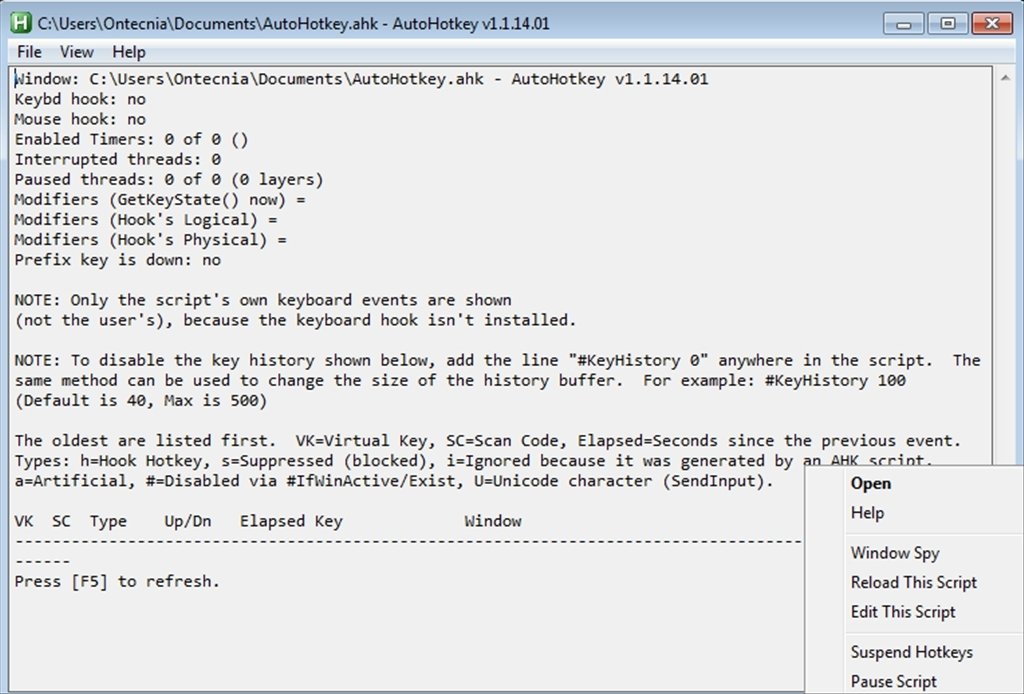
This is the important part: examples of how you implement that scan code in an autohotkey script, including edge-cases (if there are any).Īs you want to use the key with autohotkey, it makes sense to use autohotkey detect the key in the first place. This is probably the easier part (but I think is an inherent part of a complete answer). This should preferably be a pythonic solution (and just out of curiosity, I'd love to know how to do this with linux as well). Some simple way of determining the scan code for a key. To me it seems as if this topic is hardly discussed (with the few exceptions being lacking in examples or hard to understand), so I'd love an answer that would include the following: This all vaguely makes sense to me on a theoretical level, but when I want to realize it with actual code, I don't really know what to do. I also found someone explaining that to solve this you need to use scan codes instead of the usual ^ and + and so on (I'd link to it but I cannot seem to find it now). Now, searching the web this seems to be a problem with multi-language keyboards (we're using both Hebrew and English), because different languages means a different layouts (I guess?). Sometimes it works fine, and sometimes you get this error: ^+y does not exist in current keyboard layout

The python script is fine, but the ahk script doesn't work on all the computers. Looks something like this: ^+y::Run helper.py

I have written a python script for my co-workers, and then created an autohotkey script to run it every time someone presses Ctrl+ LShift+ Y.


 0 kommentar(er)
0 kommentar(er)
